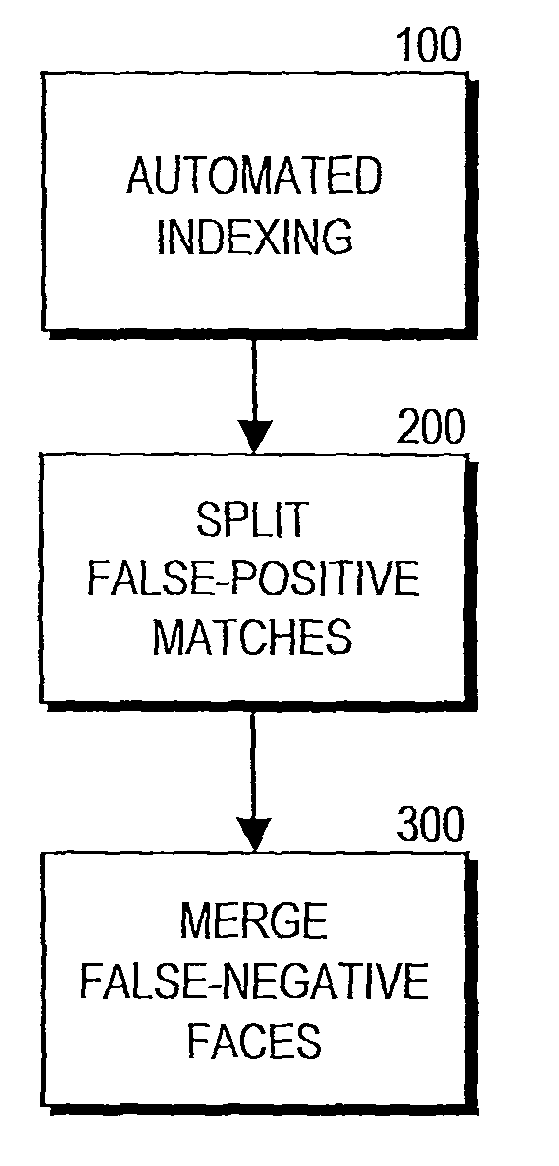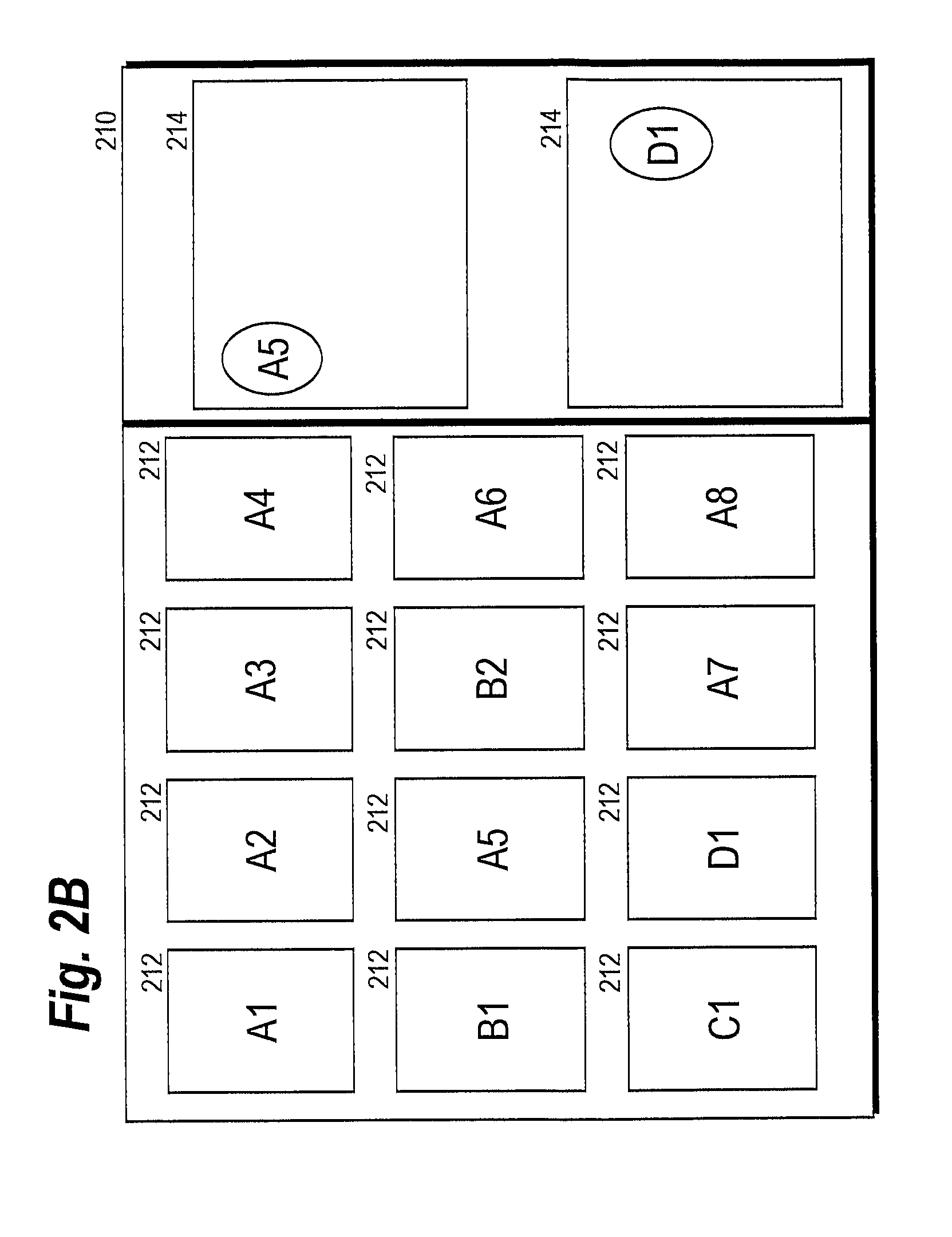Manually-assisted automated indexing of images using facial recognition
a facial recognition and automatic indexing technology, applied in the field of automatic indexing of photographs, can solve the problems of imperfectfully automated facial recognition, characterized by two types of errors, and not of practical importance, and achieve the effect of reducing the amount of tim
- Summary
- Abstract
- Description
- Claims
- Application Information
AI Technical Summary
Benefits of technology
Problems solved by technology
Method used
Image
Examples
Embodiment Construction
Terminology
[0027]A “photograph” means a physical representation of a person, such as might be printed by silver process, dye sublimation, or other process on a paper substrate.
[0028]An “image” of a person means a representation of a person, which can be electronic (e.g. a JPG file) or physical (e.g. a photograph).
[0029]A “person” is a person that is represented in an image. The plural of person is denoted as “persons” in this description.
[0030]A “face” is a representation of a person within an image.
[0031]A “collection” means a set of images.
[0032]An “operator” is the person performing manual assistance in the indexing of the images.
[0033]The term “matching” related to two faces means that the two faces are representations of the same person.
[0034]The term “non-matching” related to two faces means that the two faces are not representations of the same person.
[0035]An “association” is the identification, whether by automated or manual means, of two or more faces as being of the same ...
PUM
 Login to View More
Login to View More Abstract
Description
Claims
Application Information
 Login to View More
Login to View More - R&D
- Intellectual Property
- Life Sciences
- Materials
- Tech Scout
- Unparalleled Data Quality
- Higher Quality Content
- 60% Fewer Hallucinations
Browse by: Latest US Patents, China's latest patents, Technical Efficacy Thesaurus, Application Domain, Technology Topic, Popular Technical Reports.
© 2025 PatSnap. All rights reserved.Legal|Privacy policy|Modern Slavery Act Transparency Statement|Sitemap|About US| Contact US: help@patsnap.com



